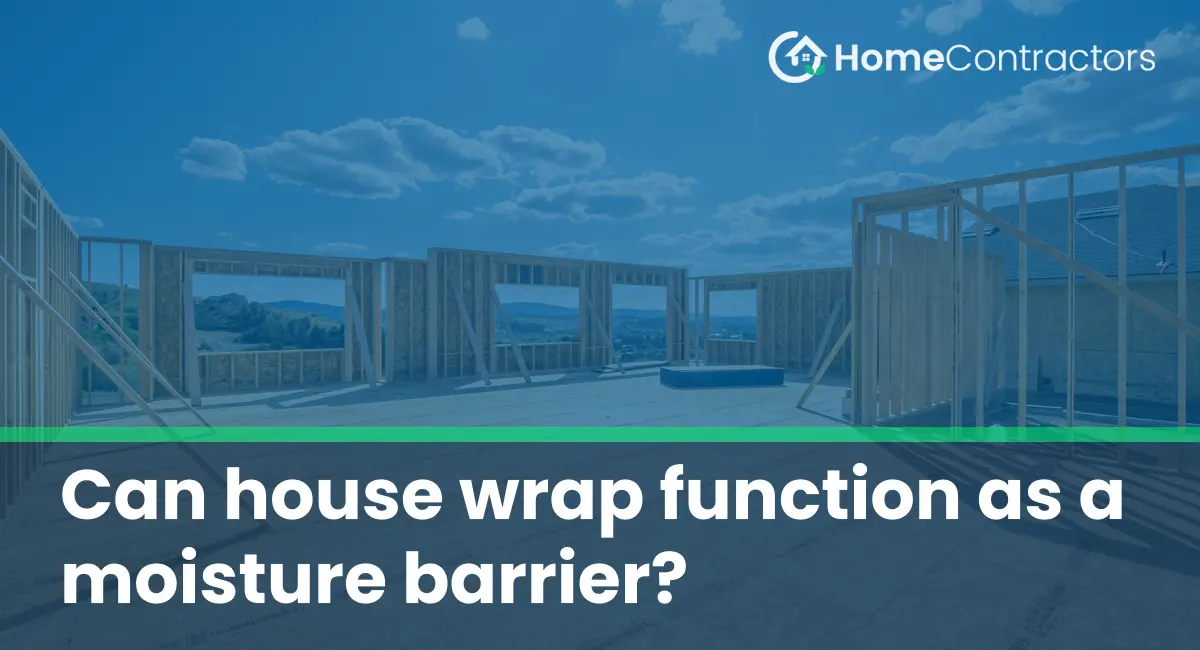House wrap is a material commonly used in construction to provide an extra layer of insulation and protection against moisture. It is designed to be permeable to water vapor but not to liquid water, which allows it to prevent moisture from entering the walls while allowing any existing moisture to escape. However, there is a common misconception that house wrap can serve as a complete moisture barrier. In this article, we will discuss the functionality of house wrap and whether it can truly function as a moisture barrier.
Understanding House Wrap
House wrap, also known as building wrap or weather-resistant barrier (WRB), is a synthetic material typically made of a non-woven polyolefin fabric. It is installed on the exterior walls of a building, underneath the siding or cladding material. Its primary purpose is to protect the underlying structure from moisture damage and improve energy efficiency. Additionally, it serves as a barrier against air infiltration, which helps maintain a consistent indoor temperature and reduce heating and cooling costs.
The Permeability of House Wrap
While house wrap provides an effective defense against bulk water penetration, it is not intended to act as a complete moisture barrier. House wrap is designed to be vapor permeable, meaning it allows moisture vapor to pass through it. This feature enables any moisture that might accumulate within the walls to escape, preventing the growth of mold, mildew, and rot.
Liquids and Rainwater
House wrap is effective at preventing liquid water intrusion. Its water-resistant properties prevent rainwater from penetrating through the walls and causing damage to the structure. However, it is important to note that house wrap is not completely waterproof and may still allow a small amount of water to infiltrate under certain extreme conditions or if the material is damaged. Therefore, it should always be paired with proper flashing, sealants, and other practices to ensure complete water resistance.
Limitations and Additional Moisture Barriers
Despite its effectiveness as a water-resistant barrier, house wrap alone cannot provide complete moisture protection for a building. There are certain limitations to consider:
- Installation and Workmanship: The functionality of house wrap depends greatly on proper installation. Any gaps, tears, or seams left unsealed during installation can compromise its ability to prevent moisture intrusion.
- Non-Moving Water Sources: House wrap is not designed to resist water from water sources such as ground water, flooding, or leaks from plumbing. These situations require additional moisture management systems, such as waterproof membranes, drainage systems, or sump pumps.
- Extensive Water Exposure: In severe weather conditions, such as heavy rainfall, strong winds, or driving rainstorms, house wrap alone may not be sufficient to keep water out. Properly designed and installed rain screens, which include additional layers of protection, are recommended for areas prone to excessive water exposure.
House wrap plays a vital role in protecting buildings from moisture damage by acting as a water-resistant barrier and promoting airflow to prevent moisture buildup. While house wrap can effectively prevent liquid water intrusion and aid in moisture management, it is not intended to function as a complete moisture barrier. For optimal protection against moisture, it is crucial to combine house wrap with other building practices, such as proper flashing, sealing, and additional moisture management systems. By understanding the limitations and using house wrap as part of a comprehensive moisture control plan, builders can ensure the long-term durability and performance of the structure.
